
The red underwing is a moth of the family Erebidae. The species was first described by Carl Linnaeus in his 1767 12th edition of Systema Naturae.
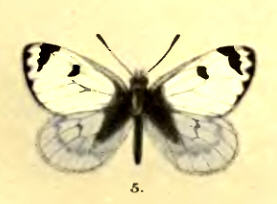
Baltia shawi, the Shaw's dwarf, is a small butterfly of the family Pieridae, that is, the yellows and whites. It is found at high altitudes in Central Asia.
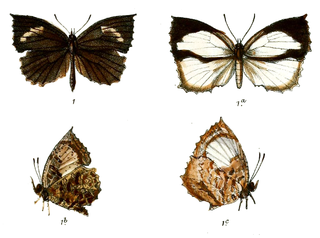
Allotinus drumila, the crenulate darkie, is a small butterfly found in India, Burma, Thailand, Laos, Vietnam, and Yunnan (China) that belongs to the lycaenids or blues family.

Hypolimnas misippus, the Danaid eggfly, mimic, or diadem, is a widespread species of nymphalid butterfly. It is well known for polymorphism and mimicry. Males are blackish with distinctive white spots that are fringed in blue. Females are in multiple forms that include male-like forms while others closely resemble the toxic butterflies Danaus chrysippus and Danaus plexippus.
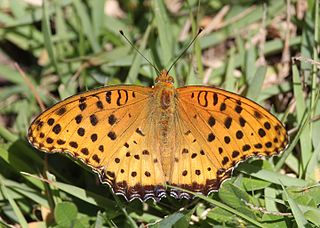
The Indian fritillary is a species of butterfly of the nymphalid or brush-footed family. It is usually found from south and southeast Asia to Australia.

Neptis clinia, the southern sullied sailer or clear sailer, is a species of nymphalid butterfly found in South Asia and Southeast Asia.

Byblia ilithyia, the spotted joker or joker, is a species of nymphalid butterfly found in parts of Africa and Asia.
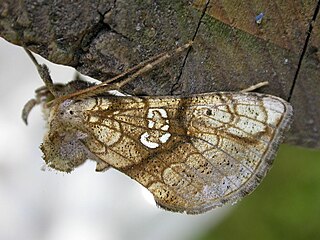
Polychrysia moneta, the golden plusia, is a moth of the family Noctuidae. It is found in the Palearctic realm.

Catocala electa, the rosy underwing, is a moth of the family Erebidae. The species was first described by Karl Friedrich Vieweg in 1790. It can be found in Europe and Asia.

Grammodes stolida, the geometrician, is a moth of the family Erebidae. The species was first described by Johan Christian Fabricius in 1775. It is found in Africa, southern Europe, most of Asia and Australia. It migrates to central and northern Europe as far north as England, Denmark and Finland.

Junonia iphita, the chocolate pansy or chocolate soldier, is a butterfly found in Asia.
Syllepte leucographalis is a moth in the family Crambidae. It was described by George Hampson in 1912. It is found in Indonesia (Bali).
Syllepte microdontalis is a moth in the family Crambidae. It was described by George Hampson in 1912. It is found in French Guiana.
Syllepte rogationis is a moth in the family Crambidae. It was described by George Hampson in 1918. It is found in Mozambique.
Synclera retractilinea is a moth in the family Crambidae. It was described by George Hampson in 1917. It is found in Kenya.
Ulopeza denticulalis is a species of moth in the family Crambidae. It was described by George Hampson in 1912. It is found in South Africa.
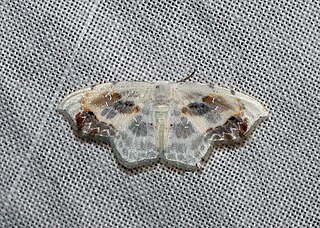
Leucoblepsis renifera is a moth in the family Drepanidae. It was described by Warren in 1900. It is found on Peninsular Malaysia, Sumatra and Borneo.
Habrona caerulescens is a moth in the family Drepanidae. It is found in New Guinea, where it has been recorded only from the Star Mountains.
Tirathaba cyclophora is a species of moth of the family Pyralidae. It was described by George Hampson in 1917. It is found in New Guinea.
Imma ancistrota is a moth in the family Immidae. It was described by Edward Meyrick in 1912. It is found on New Guinea.











